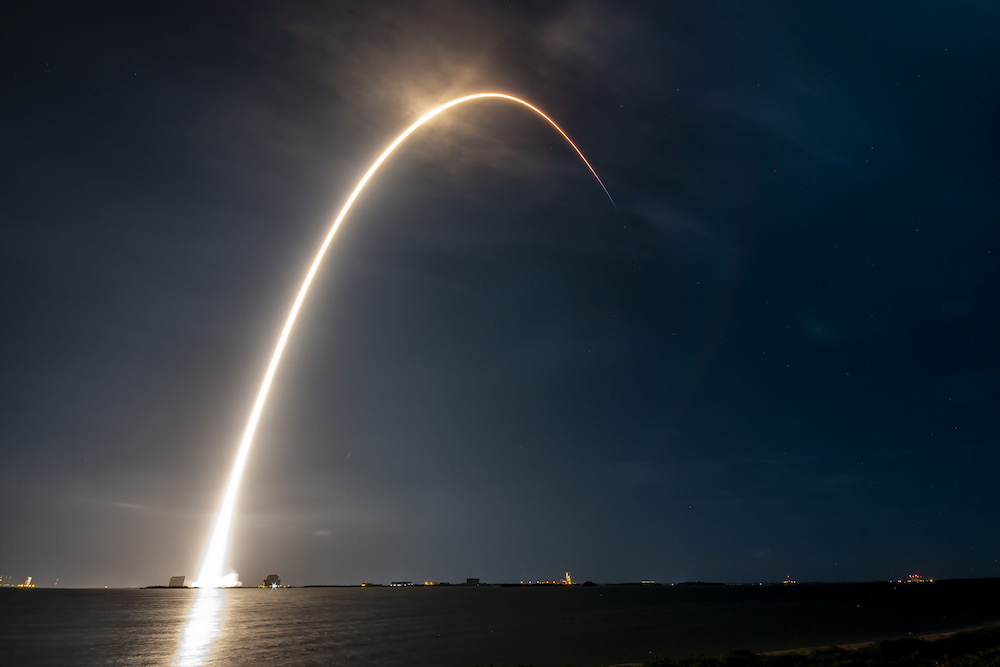Latest News

SpaceX launches IS-40e satellite for Intelsat early on April 7, 2023. Photo: SpaceX
Intelsat’s newly launched IS-40e satellite will add capacity over North America in key markets the company is targeting — commercial aviation, mobility, and network services.
SpaceX launched the Maxar-built satellite on a Falcon 9 rocket from Cape Canaveral Space Force Station in Florida at 12:30 a.m. EDT early Friday, April 7. Intelsat confirmed signal acquisition at 1:14 a.m., and Maxar confirmed post-launch the satellite deployed its solar arrays and is performing as expected.
The high-throughput satellite will add highly anticipated capacity for Intelsat’s mobility customers like commercial aviation, maritime, offshore communications, and government customers, Jean-Luc Froeliger, senior vice president of Space Systems, tells Via Satellite.
Positioned at 91 degrees West, the satellite will cover the United States, Canada, Alaska, Central America, and part of the North Atlantic. This location can serve all commercial airlines flying domestically in the U.S., in addition to regional jets and government flights, Froeliger said.
“It’s really the right satellite for mobility services,” he said, adding that IS-40e will deliver 20 to 30 times more capacity than Galaxy-17, the classic satellite currently at that location. Froeliger estimated more than 50% of the capacity will serve the aviation market.
Intelsat ordered the satellite in January 2020 — just before the pandemic completely upended the mobility market.
“We knew in-flight connectivity for commercial airlines was a growing market. But when the pandemic hit, people stopped flying,” Froeliger said. “But as soon as we started getting away from the pandemic, the number of passengers flying skyrocketed. It came back much, much faster than anybody expected.”
Intelsat has increased its position in the aviation market since the satellite was ordered, with the Gogo Commercial Aviation acquisition in 2020 followed by a multi-orbit deal with OneWeb, a new antenna and IFC service, and recent deals with Alaska Airlines and J-AIR.
“The IS-40e high-throughput technology serves as a significant commitment to our North American commercial aviation, mobility and network customers,” Dave Wajsgras, Intelsat CEO commented in a news release. “As we continue to refresh our fleet of satellites and add capacity, Intelsat is focused on providing the best value and service for our customers and their end users.”
The satellite also includes a hosted payload for NASA, the Tropospheric Emissions: Monitoring Pollution, or TEMPO payload. TEMPO will monitor and track air pollution across North America, providing “unprecedented” resolution of monitoring major air pollutants. It can monitor down to four square miles, compared to existing limits of about 100 square miles in the U.S. Intelsat will operate the payload for NASA, and it is Intelsat’s first hosted payload for NASA.
“The TEMPO mission is about more than just studying pollution – it’s about improving life on Earth for all. By monitoring the effects of everything from rush-hour traffic to pollution from forest fires and volcanoes, NASA data will help improve air quality across North America and protect our planet,” NASA Administrator Bill Nelson commented.
Get the latest Via Satellite news!
Subscribe Now